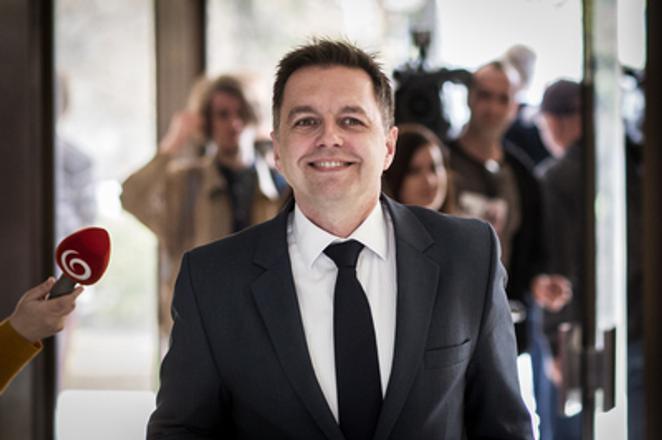According to Peter Campbell, who met the Slovak finance minister in Bratislava to interview him for The Financial Times, the minister used the strangest image to describe the populist wave sweeping Europe at the moment: a lasagne of evil.
Each layer of the lasagne allegedly represents a different part of society that has failed to curb the swelling unrest — the media, politicians, corporations, even religion. “Now we have to eat it,” he said, pointing to Britain’s impending departure from the EU, and the rising poll numbers for far-right parties from France to Hungary to Greece.
This gastronomic comparison does not sour his outlook for Slovakia, however, with his country establishing itself as one of central Europe’s industrial powerhouses. After the elections last year that saw the ruling Smer party reinstated as part of a three-party coalition, the state has good reason to be optimistic about the future.
In the meeting, Kažimír also pointed to foreign investment – from Jaguar Land Rover to Amazon – pouring into the country. He is concerned, however, about the wealth gap that exists between the prosperous western regions and the poorer east of his homeland. The minister, a native of the eastern-Slovak metropolis Košice, says there is a serious need to improve the mobility of the potential workforce in the east to the job-rich west. Many new vacancies are being created, especially in the country’s growing automotive sector, which already supports 200,000 jobs - mostly in the west. As for the recent Jaguar Land Rover investment near Nitra, Kažimír says that as many of the parts for its cars will come from Germany or the UK, the government could not persuade the company to move any further east. “More east was less attractive for them,” said Kažimír for the newspaper. “Every kilometre is important.”
The government is proposing a measure to make Slovaks rent property. “Renting is very rare — 85 per cent of real estate is in the hands of individual owners,” Kažimír explained, adding: “These people are not mobile.”
For the future, the government has a more ambitious scheme to revitalise the east — by wooing the investment might of China. He was recently in Chongqing, south-west China, to see the logistics hub that is one end of a railway that links the People’s Republic to Germany. “They can deliver goods from China to western Europe in just 18 days,” he said. “Connection with China’s market is crucial, and this can be decisive for the eastern part of Slovakia.”
Slovakia has also signed a memorandum of understanding with one of the companies developing hyperloop technology — a futuristic travel mode in which levitating pods zoom through a vacuum tube at breakneck speed. The scheme foresees a test tube running to Vienna, less than an hour’s drive over the Austrian border. The government also wants to set up areas to test self-driving cars and lure companies like Tesla to use Slovak roads as a proving ground for some of their features.
Other firms, such as Hewlett-Packard, are setting up in Košice. But despite the investment from outside the country, precious little technology is developed within Slovakia’s borders. Kažimír pointed to flying car start-up AeroMobil as a pioneer of Slovak-developed technology, but it is the exception to the rule. The research and development that goes into the country’s cars takes place in the home nations of Volkswagen, Peugeot, JLR and Kia. Out of the 40 largest automotive supply chain companies, only two are Slovak, The Financial Times wrote.



 Peter Kažimír (source: Sme)
Peter Kažimír (source: Sme)